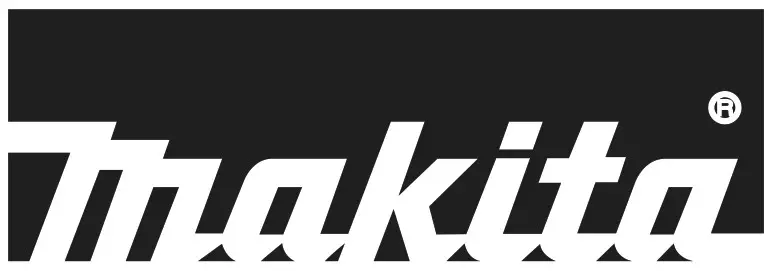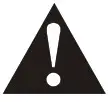 DC40RB
DC40RB
Two Port Multi Fast ChargerINSTRUCTION MANUAL![]()
![]()
![]()
![]()
![]()






Symbols
The followings show the symbols which may be used for the equipment. Be sure that you understand their meaning before use.
![]()
![]()
![]()
![]()
![]()
![]()
![]()
![]()
![]()
![]()
![]()
![]()
![]()
![]()
![]()
Only for EU countries![]()
![]()
![]()
![]()
![]()
![]()
![]()
![]()
![]()
![]()
![]()
![]()
![]()
![]()
![]()
![]()
CAUTION
- SAVE THESE INSTRUCTIONS – This manual contains important safety and operating instructions for the battery chargers.
- Before using the battery charger, read all instructions and cautionary markings on (1) battery charger, (2) battery, and (3) product using the battery.
- CAUTION – To reduce risk of injury, charge only Makita-type rechargeable batteries. Other types of batteries may burst to cause personal injury and damage.
- Non-rechargeable batteries cannot be charged with this battery charger.
- Use a power source with the voltage specified on the nameplate of the charger.
- Do not charge the battery cartridge in presence of flammable liquids or gases.
- Do not expose the charger to rain, snow, or wet condition.
- Never carry a charger by a cord or yank it to disconnect from the receptacle.
- Remove the battery from the charger when carrying the charger.
- After charging or before attempting any maintenance or cleaning, unplug the charger from the power source. Pull by plug rather than cord whenever disconnecting charger.
- Make sure the cord is located so that it will not be stepped on, tripped over, or otherwise subjected to damage or stress.
- Do not operate charger with damaged cord or plug. If the cord or plug is damaged, ask Makita’s authorized service center to replace it in order to avoid a hazard.
- Do not operate or disassemble the charger if it has received a sharp blow, been dropped, or otherwise damaged in any way; take it to a qualified serviceman. Incorrect use or reassembly may result in a risk of electric shock or fire.
- Do not charge battery cartridge when the room temperature is BELOW 10°C (50°F) or ABOVE 40°C (104°F). At the cold temperature, charging may not start.
- Do not attempt to use a step-up transformer, an engine generator, or a DC power receptacle.
- Do not allow anything to cover or clog the charger vents.
- Do not plug or unplug the cord and insert or remove the battery with wet hands. 18. Never use gasoline, benzene, thinner, alcohol, or the like to clean the charger. Discoloration, deformation, or cracks may result.
Charging
This charger can charge two batteries at the same time.
- Plug the battery charger into the proper AC voltage source. Charging lights will flash slowly in green color repeatedly.
- Insert the battery cartridge into the charger until it stops adjusting to the guide of the charger.► Fig.1 The terminal cover of the charger can be opened with inserting and closed by pulling out the battery cartridge.
- When the battery cartridge is inserted, the charging light color will change from green to blue, and charging will begin. The fast blue flashing light indicates charged condition in 0–80 % and the blue charging light will keep lighting up steadily indicate 80–100 %. The 80 % indication mentioned above is an approximate value. The indication may differ according to battery temperature or battery condition.
- With the finish of the charge, the charging light will change from a blue one to a green one and the melody sound or buzzer sound (a long beep) comes out to notify completion of the charge.
- After charging, remove the battery cartridge from the charger and unplug the charger.
NOTE: Charging time varies by temperature (10°C (50°F)–40°C (104°F)) that battery cartridge is charged at and conditions of the battery cartridge, such as a battery cartridge which is new or has not been used for a long period of time.
| Voltage | Number of cells | Li-ion battery cartridge | Capacity (Ah)according to IEC61960 | Charging time(Minutes) |
| 40 V (max.) | 10 | BL4020 | 2 | 22 |
| 40 V (max.) | 10 | BL4025 | 2.5 | 28 |
| 40 V (max.) | 10 | BL4040 | 4 | 45 |
| 40 V (max.) | 20 | BL4050F | 5 | 50 |
NOTICE: The battery charger is for charging the Makita battery cartridge. Never use it for other purposes or for other manufacturers’ batteries.
NOTE: If the charging light flashes slowly in blue color, charging may not start due to the condition of the battery a cartridge as below:— Battery cartridge from just-operated tool or battery cartridge that has been left in a location exposed to direct sunlight for a long time.— Battery cartridge that has been left for a long time in a location exposed to cold air.NOTE: When the battery cartridge is too hot, charging does not begin until the battery cartridge temperature reaches the degree at which charging is possible.NOTE: If the charging light changes to red color, charging is not possible. The terminals on the charger or battery cartridge are clogged with dust or the battery cartridge is worn out or damaged.
Changing melody upon completion of charging
- Inserting the battery cartridge into the charger brings out the last preset brief melody sound of completed charging.
- Removing and re-inserting it within five seconds after this action makes the melody sound change.
- Every time removing and re-inserting it within another five seconds after this, the melody sound changes in order.
- When the desired melody sound comes out, leave the battery cartridge being inserted and the charge will begin. When a “short beep” mode is selected, no completed charging signals come out. (Silent Mode)
- With the finish of the charge, the charging light will light up in green and the melody sound preset at the insertion of battery cartridge or buzzer sound (a long beep) comes out to notify completion of charge. (In selected silent mode, no sounds come out.)
- Preset melody sound remains stored even when the charger is unplugged.
Cooling system
This charger is equipped with a cooling fan for a heated battery in order to enable the battery to prove its own performance. The sound of cooling air comes out during cooling, which means no trouble on the charger. Blue and the red lights will flash alternately for warning in the following cases.• Trouble on the cooling fan• Incomplete cooldown of battery, such as being clogged with dustThe battery can be charged in spite of the alternate blue and red light. But the charging time will be longer than usual in this case. Check the sound of the cooling fan, vent on the charger, and battery, which can be sometimes clogged with dust.Always keep clean the vent on the charger and battery for cooling.► Fig.2: 1. Exhaust vent 2. Intake vent
NOTE: The cooling system is in order although no sound of the cooling fan comes out if the blue and red light will not flash.NOTE: The products should be sent to repair or maintenance if the blue and red light flash alternately so often.
Wall mounting
![]()
![]()
![]()
![]()
![]()
![]()
![]()
![]()
![]()
![]()
![]()
![]()
![]()
![]()
![]()
![]()
![]()
![]()
![]()
![]()
![]()
![]()
![]()
![]()
![]()
![]()
![]()
![]()
![]()
![]()
![]()
![]()
![]()
![]()
![]()
![]()
![]()
![]()
![]()
![]()
![]()
![]()
![]()
![]()
![]()
![]()
![]()
![]()
![]()
![]()
![]()
![]()
![]()
![]()
![]()
![]()
You can mount the charger on the wall. Make a clearance around the charger as shown in the figure. ► Fig.3
NOTE: Things you need to prepare:— Four screws – two for hanging and two for anchoringScrew size: 6 mm x more than 40 mm.Screw head size: Less than ø12 mm.— Tools – for tightening screws
- Fix two screws for hanging on the wall.
- Remove the rubber feet (four pieces) from the bottom of the charger.
- Hang the charger with the screws fixed in step 1.► Fig.4
- Mount the charger on the wall by tightening two anchoring screws completely.► Fig.
References
[xyz-ips snippet=”download-snippet”]

